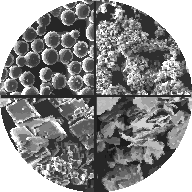location: >Simulations >Concentration by volume fractionSolid ConcentrationSolid concentration is one of the most important parameters in solid/liquid separation. The objective is usually to maximise it, and concentration has a major influence on the numerical values of some of the other constituent terms required for equipment modelling. For example, the resistance to fluid flow during filtration increases with increasing solid concentration. At the extreme, filtration resistance will be infinite when the filter cake consists entirely of solids. Hence, solid concentration is an important concept to understand and quantify. In most cases we wish to know the concentration by volume fraction, this is illustrated in the accompanying figure, but the data is more easily obtained in terms of mass fraction.In most cases a sample can be taken and dried to constant mass. The mass concentration is, therefore, the dry mass divided by the mass before drying: call this Cw.In order to convert this to solid concentration by volume fraction the true solid density (þs) and accompanying fluid density (þ) must be known. If they are the following formula can be applied: If you would like to convert a solid concentration by mass fraction into one by volume fraction (i.e. volume of solids divided by volume of solids plus the volume of voids) then click here. N.B. you will also need to enter the true solid density and fluid density. |
|
Home Book download Video solutions Interactive problems Problem solutions Size Analysis Expert system
